Agaricus augustus, or the prince mushroom, is a wild mushroom found in western North America, the northeastern United States, and the pacific northwest; it’s an edible mushroom and a favorite of mushroom hunters. Typical fruiting is during late summer through fall.
Discovering The Prince mushroom
Belonging to the Phylum: Basidiomycota – Class: Agaricomycetes – Order: Agaricales and Family: Agaricaceae, this highly desired edible wild mushroom has a scientific name with a princely meaning.
The first portion of the name, Agaricus, means mushroom. The second part, however, Augustus, is Latin for majestic or venerable, which suits this mushroom well.
Keep in mind that the Rocky Mountain version of this mushroom is called Agaricus julius and the names are sometimes used interchangeably.
What Are You Foraging For Right Now?
We're thrilled to hear your ideas. What would you like to submit today? Feel free to share your thoughts and experiences with us.
The prince mushroom earned its regal name from its distinctive appearance.
The brownish scales on the cap of the prince mushroom make it easily recognizable for even novice foragers.
Its larger size and sweet, almond-like aroma are also distinguishing features.
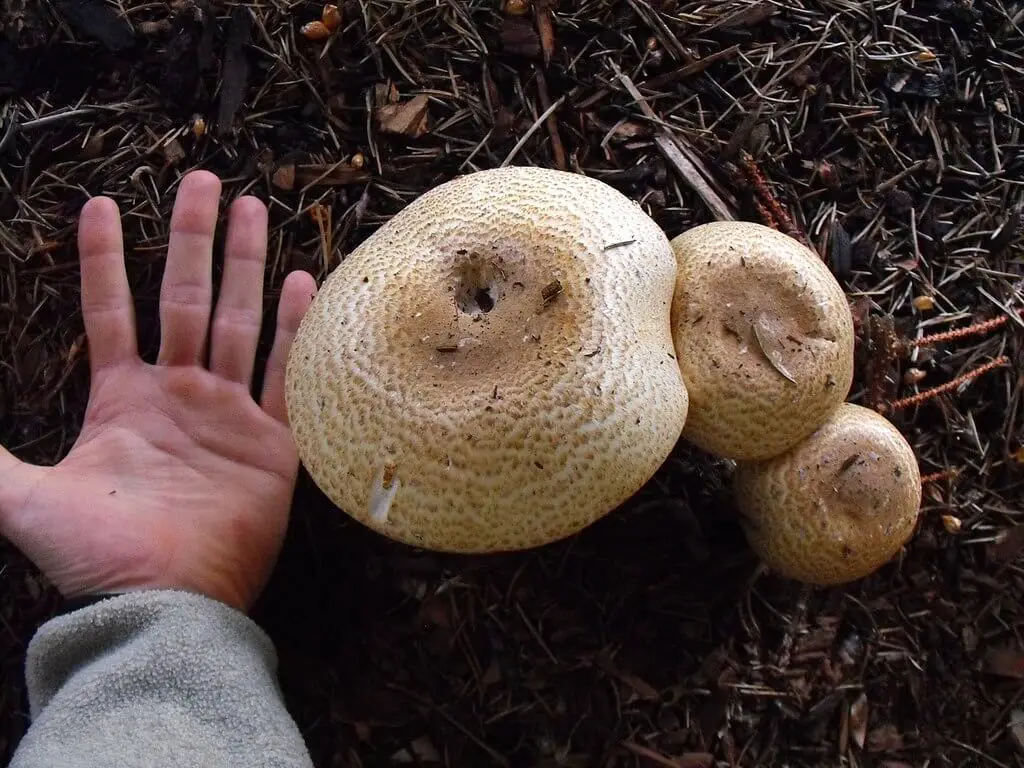
Where does the prince mushroom grow?
Prince mushrooms can be found in many areas of the world.
It’s commonly found in western North America, the northeastern United States, the pacific northwest, and throughout British Columbia. It also grows freely in Europe, Australia, New Zealand, North Africa, China, and Pakistan.
In these areas, it prefers coniferous and deciduous forested areas.
As a saprobic mushroom, it will generally be found living off decaying material and leaf litter in groups, although single fruit bodies aren’t unheard of.
It can also be found occasionally along roadsides or on lawns as well. Typical fruiting is during late summer through fall.
Is the Prince mushroom edible?
Not only is the prince mushroom edible when cooked, but it’s also one of the most coveted of the edible species.
It should not be eaten raw.
It is recommended that all wild mushroom species be cooked before eating; the prince mushroom is no exception. Eating raw can result in gastrointestinal upset.
What does the prince mushroom taste like?
The large size and slightly sweet, almond-like flavor of this edible mushroom make it an interesting and delicious addition to many dishes.
This unique flavor is not quite as mushroomy as other similar-sized mushrooms like the portobello, which adds to its desirability.
Cooking tips
Prince mushrooms are very versatile and can be used in any recipe where mushrooms are an ingredient, especially when button mushrooms or portobellos are called for.
- Before cooking, be sure to clean the mushrooms thoroughly. Cleaning is not the same as washing – mushrooms are not washed with water.
- To clean a mushroom, either use a dry brush or cloth or try putting them in a plastic bag and adding cornmeal and shaking. After a minute or two, the mushrooms will be cleaned and ready to cook.
- Once cut, a mushroom’s color and flavor will begin to dull. Be sure to cook within 10-15 minutes of slicing.
A quick internet search will result in several recipes using the prince mushroom. Among the ideas for use are pizza, pasta, or simply sauteed in butter.
Recipes to try out:
- The Prince and Chicken Pie
- Butternut Squash Gnocchi With Prince Mushrooms
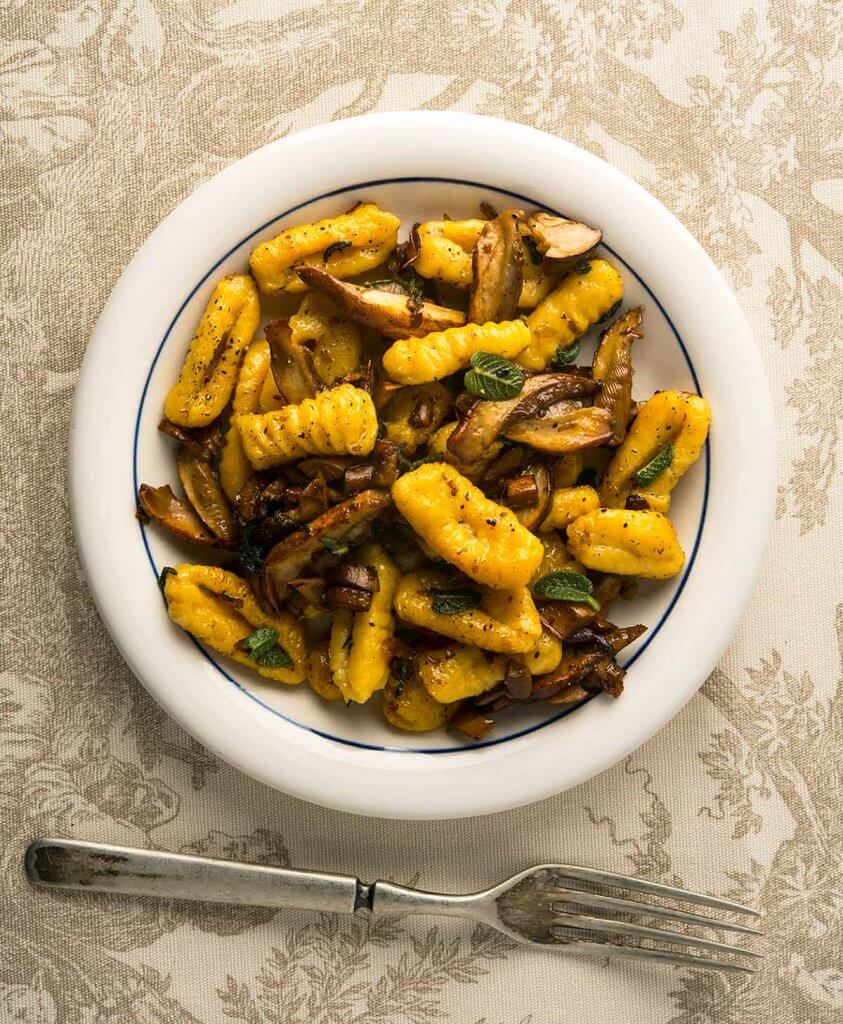
Any other uses?
The prince mushroom is also purported to have medicinal benefits like:
- Cholesterol reduction
- Diabetes control
- Cancer-fighting compounds
It’s important to note that these claims haven’t been thoroughly researched and should not be taken as medical advice.
How do you identify Agaricus Augustus?
This large mushroom has some distinguishing features that aid its identification.
Look for the following to help determine if what you’ve found is indeed a prince mushroom:
- Large cap that’s cylindrical in young mushrooms, becoming more convex and flattened as it matures. Cap size can range from 10-35 cm (3–12 in).
- Brownish circle at the center of the cap.
- Cap will be dry and white but covered in brown to dark brown scales.
- Gills are not attached to the stem and will be white in young specimens, turning to a chocolate brown almost blackish color as the mushroom matures.
- Stems are generally pale and smooth above the large skirt and covered in brown scales below.
- When cut, the flesh will be consistently white.
- Spores will be ellipsoid, and the spore print will be a purple, brown color.
- If squeezed, you should notice an odor reminiscent of almonds.
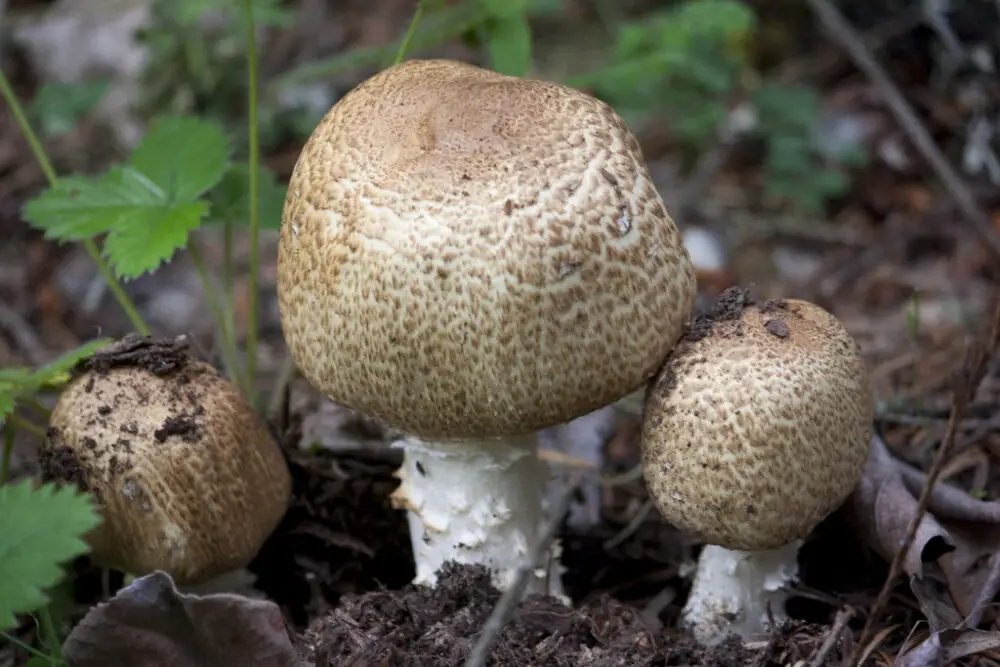
Does the prince have any poisonous or non-poisonous lookalikes?
Once the prince mushroom has matured, its distinctive scaling and size may make it less likely to be confused with other species.
There are, however, poisonous species of Agaricus as well.
The most typically confused with the prince mushroom is the poisonous Agaricus xanthodermus, which stains yellow when scratched or bruised. This species can often be found in lawns and gardens growing in clusters.
Young specimens of the prince mushroom that are still primarily white might also be confused with a poisonous Amanita species, the Smith’s amanita.
As mentioned, A. julius is an Agaricus species similar to the prince mushroom found in the Rocky Mountains. Another close cousin, Agaricus nanaugustus, can be found in the Midwest and the eastern United States. Both are edible.
Check our video on the 7 most poisonous mushrooms growing in the US (mushroom details and ingestion symptoms included)!
The prince mushroom can also occasionally be confused with Agaricus bernardii, which has different soil requirements and is therefore not found in the same areas, and Agaricus impudicus, which will smell more like radishes.
Both species are edible but will not have the same flavor profile as the prince mushroom.
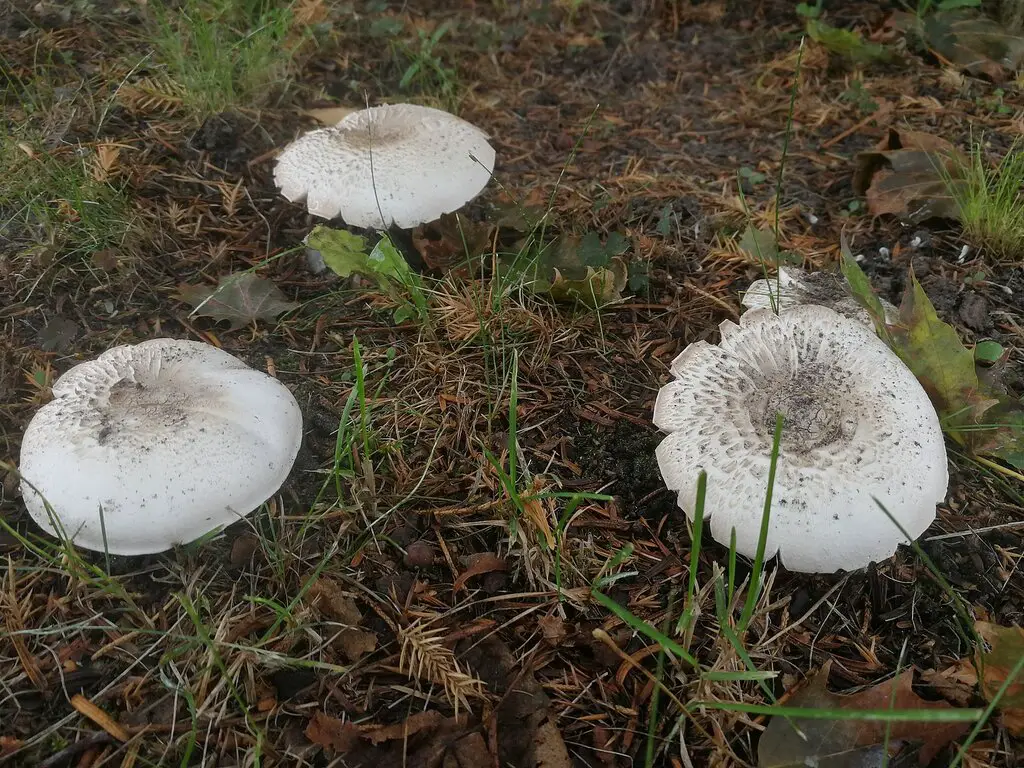
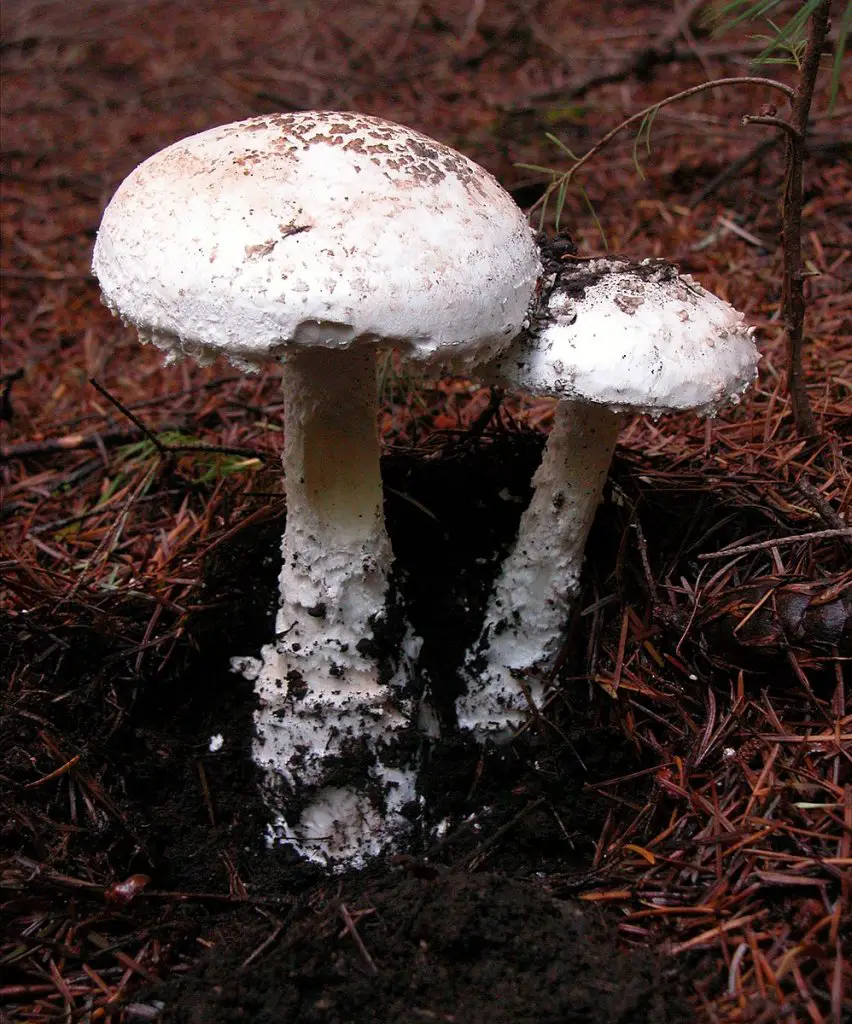
Foraging tips
When foraging for prince mushrooms, have a list of identifying attributes.
Check the following:
- Size
- Color of cap and presence of scales
- Spore print
- Flesh color when cut
- Aroma
The larger size of the mature prince mushroom makes them prone to bug infestations, particularly maggots. Check and clean carefully before cooking. Younger mushrooms are less likely to have this issue.
Also, check the surroundings for toxins that may have contaminated the mushrooms. Mushrooms are porous and notorious for incorporating compounds from their environments. What surrounds them will be in them and eventually in you.
If you find a good patch, check back regularly as the prince mushroom can have multiple fruiting in a season if conditions are right.
Lorin is a writer, photographer and nature enthusiast in Sacramento, CA. In addition to gardening, she makes a regular practice of forging for edible plants and flowers. Nature nourishes if you know where to look.

